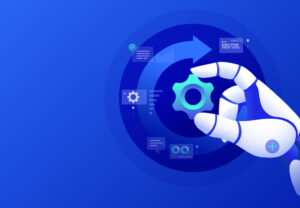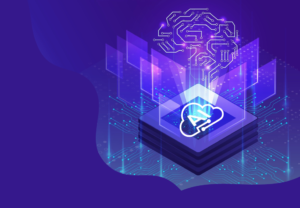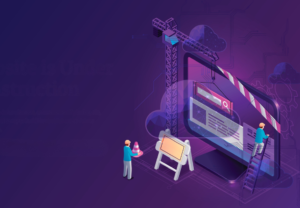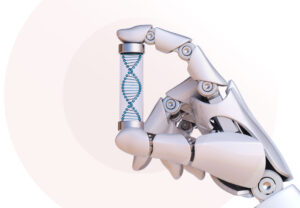Containerization vs. Serverless: Optimizing Cloud-Native Architectures for Scalability
“Modern enterprises face critical architectural decisions that directly impact scalability, cost efficiency, and competitive advantage. The serverless cold start impact on application scalability and container orchestration complexity vs serverless tradeoffs present distinct challenges for technical leaders. Understanding stateful application patterns serverless vs containers, cost comparison serverless vs containers long running jobs, and developer productivity container vs serverless environments becomes essential for strategic planning. Organizations must evaluate when to migrate from serverless to containers while considering hybrid architecture combining containers and serverless approaches. Vendor lock-in considerations serverless vs containers, security boundaries serverless functions vs containers, and optimizing resource allocation containers vs serverless auto-scaling fundamentally shape enterprise cloud-native strategies.”
The accelerating demand for scalable, resilient digital solutions has positioned cloud-native architectures at the center of enterprise transformation strategies. Organizations across industries face mounting pressure to deliver applications that can dynamically adapt to varying workloads while maintaining cost efficiency and operational excellence.
Two dominant compute paradigms have emerged as the primary drivers of modern cloud-native architectures: containerization and serverless computing. These models represent fundamentally different approaches to application deployment, resource management, and operational complexity.
- a) Containerization provides portable, consistent runtime environments that package applications with their dependencies
- b) Serverless computing abstracts infrastructure management entirely, enabling developers to focus solely on business logic
- c) Scalability concerns now dominate boardroom discussions as enterprises recognize that architectural decisions directly impact competitive positioning
The evolution from traditional virtual machines to containers and subsequently to serverless functions reflects the industry’s continuous pursuit of greater agility, reduced operational overhead, and improved resource utilization. This progression has created a complex decision landscape where technical leaders must evaluate multiple factors to determine optimal architectural patterns for specific business requirements.
Understanding when to leverage each approach, or how to combine them effectively, has become a critical competency for organizations seeking to maintain technological leadership in rapidly evolving markets.
Technical Foundations and Ecosystem Overview
- 1. Containerization Technology Stack
Containerization technology provides lightweight, portable runtime environments that encapsulate applications and their dependencies. The technology stack consists of several interconnected components that work together to deliver consistent deployment experiences across diverse infrastructure environments.
- a) Docker serves as the foundational container runtime, enabling developers to package applications into standardized units
- b) Kubernetes provides sophisticated orchestration capabilities, managing container lifecycle, networking, and scaling across distributed clusters
- c) Managed container services including Amazon ECS, Google Kubernetes Engine (GKE), and Azure Kubernetes Service (AKS) reduce operational complexity while maintaining flexibility
- d) Container registries facilitate secure image distribution and version management across development and production environments
The containerization ecosystem offers several core advantages that make it particularly suitable for complex enterprise workloads. Applications packaged in containers maintain consistent behavior across development, testing, and production environments, eliminating the traditional “works on my machine” challenges that plague software deployment processes.
- 2. Serverless Computing Platforms
Serverless computing represents a paradigm shift toward event-driven, stateless execution models where cloud providers handle all infrastructure management responsibilities. This approach enables developers to deploy code without provisioning or managing servers, with automatic scaling based on demand.
- a) AWS Lambda pioneered the serverless movement, offering sub-second billing granularity and extensive integration with other AWS services
- b) Azure Functions provides similar capabilities within the Microsoft ecosystem, supporting multiple programming languages and hybrid deployments
- c) Google Cloud Run combines serverless scalability with container-based deployment models, bridging traditional containerization and serverless approaches
- d) Event-driven architectures naturally align with serverless execution models, enabling real-time processing and reactive system designs
- 3. CNCF’s Role in Cloud-Native Innovation
The Cloud Native Computing Foundation (CNCF) has established itself as the primary organization driving standardization and innovation within the cloud-native ecosystem. The foundation’s graduated projects, including Kubernetes, Prometheus, and Envoy, form the backbone of modern container orchestration and observability strategies.
Recent CNCF annual reports indicate that 75% of organizations report improved scalability through cloud-native adoption, with substantial cost reductions observed across technology sectors. [22] [23] These benchmarks provide valuable guidance for enterprises evaluating their architectural transformation strategies. [6] [7] [8]

When to Use Containerization
- 1. Complex Distributed Microservices
Containerization excels in scenarios requiring sophisticated service orchestration and inter-service communication patterns. Organizations building complex distributed systems benefit from the granular control and operational visibility that container platforms provide. [9] [10] [11]
- a) Service mesh integration enables advanced traffic management, security policies, and observability across microservice architectures
- b) Gradual migration strategies allow enterprises to modernize legacy applications incrementally without requiring complete rewrites
- c) Development team autonomy increases as teams can independently deploy and scale their services within established guardrails
- d) Cross-functional collaboration improves through standardized deployment interfaces and consistent operational procedures
- 2. Stateful Application Patterns
Container orchestration platforms provide sophisticated mechanisms for managing stateful workloads that require persistent storage, session affinity, and complex initialization procedures. These capabilities make containerization the preferred choice for applications that maintain state across request cycles.
Stateful application patterns serverless vs containers reveal significant differences in architectural approaches. Containers support persistent volumes, database connections, and cached data structures that would be challenging to implement effectively in serverless environments.
- a) Database clustering and distributed data stores require precise control over startup sequences and network topology
- b) Session management benefits from sticky routing and local caching capabilities available in container platforms
- c) Background processing that maintains long-running connections or processes large datasets efficiently
- d) Legacy application modernization often requires gradual refactoring that containers support more readily than serverless platforms
- 3. Consistency Across Environments
Container orchestration complexity vs serverless tradeoffs becomes particularly evident when organizations require consistent behavior across development, staging, and production environments. Containers provide identical runtime environments regardless of underlying infrastructure, reducing deployment risks and configuration drift.
- a) Multi-cloud portability enables organizations to avoid vendor lock-in while maintaining operational consistency
- b) Hybrid deployment models support applications that span on-premises and cloud environments
- c) Regulatory compliance requirements often necessitate specific runtime configurations that containers can guarantee
- d) Development productivity increases when local development environments mirror production deployments exactly
When to Use Serverless
- 1. Event-Driven Stateless Workloads
Serverless architectures naturally align with event-driven processing patterns where functions execute in response to specific triggers without maintaining persistent state between invocations. These patterns enable highly scalable, cost-effective solutions for specific use cases. [9][12][10]
- a) API gateways and lightweight backend services benefit from automatic scaling and pay-per-request billing models
- b) Data processing pipelines can leverage serverless functions for transformation, validation, and routing operations
- c) Integration workflows connecting disparate systems often require minimal computational resources and irregular execution patterns
- d) Real-time notification systems can process events as they occur without maintaining permanent infrastructure
- 2. High Agility and Rapid Prototyping
Developer productivity container vs serverless environments shows significant advantages for serverless platforms when teams prioritize rapid iteration and minimal operational overhead. Serverless deployment models enable developers to focus entirely on business logic implementation.
- a) Faster time-to-market results from reduced infrastructure setup and configuration requirements
- b) Lower barrier to entry enables smaller development teams to build sophisticated distributed systems
- c) Experimentation velocity increases as teams can deploy and test new features without infrastructure provisioning delays
- d) Reduced operational burden allows organizations to allocate more resources to feature development rather than infrastructure management
- 3. Cost-Efficiency for Irregular Workloads
Cost comparison serverless vs containers long running jobs reveals distinct advantages for each model depending on workload characteristics. Serverless billing models excel when processing requirements vary dramatically over time or remain consistently low.
However, the serverless cold start impact on application scalability must be carefully evaluated for latency-sensitive applications. Cold starts can introduce delays ranging from hundreds of milliseconds to several seconds, depending on runtime environment and function complexity.
- a) Batch processing jobs with sporadic execution schedules benefit from pay-per-execution billing
- b) Seasonal applications can scale to zero during inactive periods, eliminating infrastructure costs
- c) Development and testing environments consume resources only during active use
- d) Proof-of-concept projects require minimal upfront investment and can scale based on validation results
Scaling, Performance, and Cost
- 1. Operational Control and Resource Management
The fundamental distinction between containerization and serverless lies in the level of operational control organizations maintain over their computing environments. Container platforms provide extensive configuration options and direct access to underlying infrastructure characteristics, while serverless platforms abstract these details entirely.
- a) Resource allocation precision allows container deployments to optimize CPU, memory, and network utilization based on specific application requirements
- b) caling predictability enables containers to maintain consistent performance characteristics during traffic fluctuations
- c) Debugging capabilities in container environments provide complete visibility into application behavior and system interactions
- d) Security boundaries serverless functions vs containers differ significantly, with containers offering more granular control over network policies and access controls
- 2. Billing Models and Cost Optimization
Resource consumption patterns and billing structures create distinct economic profiles for containerized and serverless deployments. Understanding these differences enables organizations to optimize costs based on workload characteristics and usage patterns.
Container platforms typically charge for provisioned capacity regardless of actual utilization, making them cost-effective for applications with consistent resource requirements. ECS, GKE, and AKS billing models reward efficient resource utilization and long-term capacity planning.
Serverless platforms implement pay-per-execution billing that aligns costs directly with actual usage. Lambda and Cloud Run charge based on execution time and memory allocation, making them ideal for workloads with unpredictable or highly variable demand patterns.
- a) Predictable workloads favor container deployments due to consistent resource utilization and bulk pricing advantages
- b) Bursty traffic patterns benefit from serverless auto-scaling capabilities and usage-based pricing [9][10][13]
- c) Development environments often achieve significant cost savings through serverless approaches that scale to zero during inactive periods
- d) Long-running processes typically demonstrate better cost efficiency in container environments due to reduced per-invocation overhead
- 3. Developer Experience and Platform Engineering
The impact on development team productivity varies significantly between container and serverless deployment models. Each approach requires different skill sets, tooling, and operational procedures that influence team effectiveness and project delivery timelines.
Container platforms require deeper infrastructure knowledge but provide greater flexibility for complex application architectures. Development teams must understand Kubernetes concepts, networking configurations, and resource management principles to optimize their deployments effectively.
Serverless platforms reduce infrastructure complexity but introduce constraints around execution time limits, statelessness requirements, and vendor-specific APIs. Teams can deploy applications faster but may encounter limitations when building complex, stateful systems.
- a) Learning curve considerations favor serverless for teams prioritizing rapid application delivery over operational control
- b) Debugging complexity increases in serverless environments due to distributed execution and limited visibility
- c) Testing strategies differ significantly, with containers supporting more comprehensive local development environments
- d) Deployment automation varies in complexity, with serverless platforms typically offering simpler CI/CD integration
Decision Frameworks: How to Choose
- 1. Workload Characteristics Assessment
Organizations must evaluate multiple dimensions of their application requirements to determine optimal deployment strategies. This assessment should consider both immediate needs and long-term architectural evolution plans. [9][12][14]
- a) Execution duration patterns influence cost-effectiveness, with short-lived tasks favoring serverless and long-running processes benefiting from container deployments
- b) State management requirements determine architectural feasibility, as serverless functions must handle state externally while containers can maintain local state
- c) Integration complexity affects implementation timelines, with serverless excelling at simple integrations and containers supporting complex inter-service communication
- d) Performance requirements including latency sensitivity and throughput demand influence platform selection
- 2. Regulatory and Compliance Considerations
Enterprise organizations operating in regulated industries must evaluate how deployment models align with compliance requirements and audit processes. These considerations often override purely technical or economic factors in decision-making processes.
- a) Data residency requirements may necessitate specific infrastructure controls that containerization platforms provide more readily
- b) Audit trail capabilities vary between platforms, with containers typically offering more comprehensive logging and monitoring options
- c) Security certification compliance often requires specific configuration controls that serverless platforms may not support
- d) Risk management policies may favor one approach over another based on organizational risk tolerance and control requirements
- 3. Hybrid Architecture Strategies
When to migrate from serverless to containers becomes a critical decision point as applications mature and requirements evolve. Many organizations discover that hybrid architecture combining containers and serverless provides optimal flexibility and performance characteristics.
- a) Microservice boundary design can leverage both deployment models within a single application architecture
- b) Data processing pipelines often benefit from combining containerized persistent services with serverless processing functions
- c) API architecture patterns can use serverless for lightweight endpoints while containerizing complex business logic
- d) Migration pathways should be planned to accommodate changing requirements and scaling needs over time
- 4. Vendor Lock-in Risk Assessment
Vendor lock-in considerations serverless vs containers significantly impact long-term strategic flexibility and cost management. Organizations must balance the convenience of managed services against the risks of proprietary dependencies.
Container platforms built on Kubernetes provide greater portability across cloud providers and on-premises environments. This standardization reduces switching costs and enables multi-cloud strategies that improve negotiating leverage with vendors.
Serverless platforms typically involve deeper integration with provider-specific services and APIs. While this integration can accelerate development, it creates dependencies that complicate migration to alternative platforms.
- a) API standardization varies significantly between serverless providers, affecting application portability
- b) Tooling ecosystem compatibility influences development team productivity and operational procedures
- c) Cost negotiation flexibility improves with reduced vendor dependencies and standardized deployment models
- d) Exit strategy planning should account for migration complexity and associated risks
Real-World Applications and Enterprise Perspectives
- 1. Industry Benchmark Analysis
Recent Gartner Magic Quadrant assessments for Cloud Infrastructure and Platform Services highlight Google, Microsoft, and Oracle as market leaders, with particular emphasis on scalability capabilities and ecosystem maturity. These evaluations provide valuable guidance for enterprises assessing vendor capabilities and market positioning. [15] [16] [17]
Accenture’s public case studies demonstrate enterprise-scale modernization initiatives leveraging Google Cloud’s cloud-native technologies. Their transformation journey illustrates how large organizations achieve improved agility, data-driven insights, and resilient business processes through strategic architecture decisions. [18]
McKinsey analysis quantifies the business impact of cloud-native adoption, documenting up to 35% reduction in infrastructure costs for certain industry sectors. These findings validate the economic benefits of strategic cloud-native transformation when executed with appropriate architectural choices. [19]
- a) Financial services organizations leverage containerization for regulatory compliance while using serverless for customer-facing applications
- b) Retail enterprises combine both models to handle seasonal traffic variations and maintain consistent customer experiences
- c) Manufacturing companies use containers for industrial IoT applications while implementing serverless functions for supply chain integration
- d) Healthcare systems balance compliance requirements with agility needs through carefully designed hybrid architectures
- 2. Platform Engineering Evolution
The rise of platform engineering disciplines reflects the growing complexity of cloud-native operations and the need for standardized, repeatable deployment patterns. Organizations are investing in internal platform capabilities that abstract underlying infrastructure complexity while maintaining operational control.
Deloitte insights on cloud innovation scenarios detail how enterprises balance internal operations, customer experience, security, and data intelligence requirements. These scenario-based frameworks provide actionable guidance for executives navigating platform engineering investments and organizational changes. [20] [21]
- a) Internal developer platforms increasingly combine container orchestration with serverless function deployment capabilities
- b) GitOps practices standardize deployment procedures across both containerized and serverless applications
- c) Observability strategies must account for the different monitoring and debugging requirements of each deployment model
- d) Cost optimization practices benefit from unified visibility across diverse compute environments
- 3. CNCF Community Insights
The Cloud Native Computing Foundation’s annual surveys provide quantitative evidence of adoption trends and operational outcomes across the industry. The 2024 report documents steady Kubernetes growth alongside increasing serverless adoption, suggesting that organizations view these technologies as complementary rather than competitive. [6] [8] [22] [23]
- a) Adoption rates show 75% of surveyed organizations reporting improved scalability through cloud-native practices
- b) Cost reduction metrics demonstrate substantial financial benefits for organizations implementing containerization and serverless strategically
- c) Operational maturity indicators suggest that successful organizations invest in platform engineering capabilities to manage complexity
- d) Security practices continue evolving as organizations gain experience with cloud-native threat models and mitigation strategies

Future Trends and Strategic Takeaways
- 1. Emerging Technology Integration
The convergence of artificial intelligence, machine learning, and cloud-native architectures is creating new requirements for computing platforms. Organizations must consider how their architectural choices will accommodate future AI/ML workloads and edge computing requirements. [7][8]
- a) GPU acceleration support varies between container and serverless platforms, influencing AI/ML deployment strategies
- b) Edge computing integration requires careful consideration of latency, bandwidth, and offline capabilities
- c) Stream processing architectures benefit from hybrid approaches that combine real-time serverless functions with persistent containerized services
- d) Data pipeline optimization increasingly leverages both deployment models to balance cost, performance, and operational complexity
- 2. Cost Optimization and FinOps Evolution
The maturation of cloud-native cost optimization practices, often referred to as FinOps, is driving more sophisticated approaches to resource allocation and financial management. Organizations are developing capabilities to optimize spending across diverse computing environments dynamically.
Optimizing resource allocation containers vs serverless auto-scaling requires sophisticated understanding of workload patterns and cost structures. Leading organizations implement automated policies that shift workloads between deployment models based on current demand and cost optimization targets.
- a) Dynamic workload placement enables organizations to optimize costs in real-time based on current pricing and demand patterns
- b) Predictive scaling algorithms improve resource utilization efficiency across both containerized and serverless deployments
- c) Multi-cloud cost optimization strategies leverage competitive pricing and feature differences between providers
- d) Automated cost governance policies prevent budget overruns while maintaining performance requirements
- 3. Organizational Capabilities and Cultural Transformation
Successful cloud-native transformation requires more than technology adoption; it demands organizational changes that support new operational models and development practices. Leading organizations invest in culture, processes, and skills development alongside technology implementation.
- a) Cross-functional team structures enable faster decision-making and reduced coordination overhead
- b) Continuous learning programs help technical teams adapt to rapidly evolving technology landscapes
- c) Experimentation frameworks encourage innovation while managing risk through controlled testing approaches
- d) Operational excellence practices scale effective patterns across diverse technology environments
Conclusion
The strategic choice between containerization and serverless computing fundamentally shapes an organization’s ability to deliver scalable, cost-effective digital solutions. Rather than viewing these approaches as mutually exclusive alternatives, successful enterprises recognize their complementary strengths and design architectures that leverage both models strategically.
Containerization provides the operational control and consistency required for complex, stateful applications while enabling portability across diverse infrastructure environments. Serverless computing delivers agility and cost efficiency essential for event-driven workloads and rapid innovation cycles.
The decision framework must account for workload characteristics, organizational capabilities, regulatory requirements, and long-term strategic objectives. Organizations that develop sophisticated understanding of both deployment models position themselves to adapt quickly to changing business requirements and technological evolution.
Motherson Technology Services: Cloud-Native Excellence
Motherson Technology Services exemplifies the strategic application of both containerization and serverless patterns in delivering transformative client solutions. Our approach to cloud-native architecture enables automotive and industrial clients to achieve remarkable improvements in time-to-market, operational efficiency, and cost optimization.
Through carefully designed hybrid architectures, Motherson combines containerized services for complex business logic with serverless functions for integration and data processing workloads. This approach delivers several key advantages:
- a) Accelerated development cycles through reduced infrastructure complexity and standardized deployment procedures
- b) Enhanced scalability that automatically adapts to varying workload demands across diverse industry verticals
- c) Cost optimization achieved through intelligent workload placement and resource utilization strategies
- d) Vendor-agnostic flexibility that protects client investments while enabling best-of-breed technology adoption
The transformation outcomes demonstrate tangible business value through faster product launches, seamless scaling capabilities for digital platforms, and improved operational resilience. These results validate the strategic importance of architectural decisions in competitive differentiation and long-term success.
Building engineering excellence through cloud-native practices requires sustained investment in platform capabilities, team development, and operational maturity. Organizations that commit to this journey, guided by clear decision frameworks and strategic vision, position themselves to lead in an increasingly digital business environment.
References
[1] https://bluelight.co/blog/aws-ecs-vs-aws-lambda
[2] https://learn.microsoft.com/en-us/azure/architecture/guide/technology-choices/compute-decision-tree
[3] https://cloud.google.com/kubernetes-engine/docs/concepts/gke-and-cloud-run
[4] https://news.ycombinator.com/item?id=16413027
[5] cncf.io
[7] https://www.cncf.io/blog/2024/11/19/emerging-trends-in-the-cloud-native-ecosystem/
[9] https://bluelight.co/blog/aws-ecs-vs-aws-lambda
[10] https://cloud.google.com/kubernetes-engine/docs/concepts/gke-and-cloud-run
[12] https://learn.microsoft.com/en-us/azure/architecture/guide/technology-choices/compute-decision-tree
[13] https://digitalcloud.training/ecs-vs-ec2-vs-lambda/
[16] https://cloud.google.com/resources/content/gartner-strategic-cloud-platform-services?hl=en
[17] https://www.oracle.com/in/cloud/gartner-mq-strategic-cloud-platform-services-leader/
[18] https://www.accenture.com/in-en/case-studies/about/unlocking-cloud-native-reinvention
[19] https://journalwjarr.com/sites/default/files/fulltext_pdf/WJARR-2025-1436.pdf
[21] https://www.deloitte.com/au/en/Industries/technology/about/platform-engineering.html
[22] https://www.cncf.io/lf-report-type/annual/
[23] https://www.cncf.io/wp-content/uploads/2025/04/cncf_annual_survey24_031225a.pdf
[25] https://cloudtweaks.com/2024/02/top-cloud-cost-optimization-strategies/
[26] https://kubernetes.io/blog/2025/07/28/kubernetes-v1-34-sneak-peek/
About the Author:

Dr. Bishan Chauhan
Head – Cloud Services & AI / ML Practice
Motherson Technology Services
With a versatile leadership background spanning over 25 years, Bishan has demonstrated strategic prowess by successfully delivering complex global software development and technology projects to strategic clients. Spearheading Motherson’s entire Cloud Business and global AI/ML initiatives, he leverages his Ph.D. in Computer Science & Engineering specializing in Machine Learning and Artificial Intelligence. Bishan’s extensive experience includes roles at Satyam Computer Services Ltd and HCL prior to his 21+ years of dedicated service to the Motherson Group.

 September 24, 2025
September 24, 2025 Dr. Bishan Chauhan
Dr. Bishan Chauhan















































